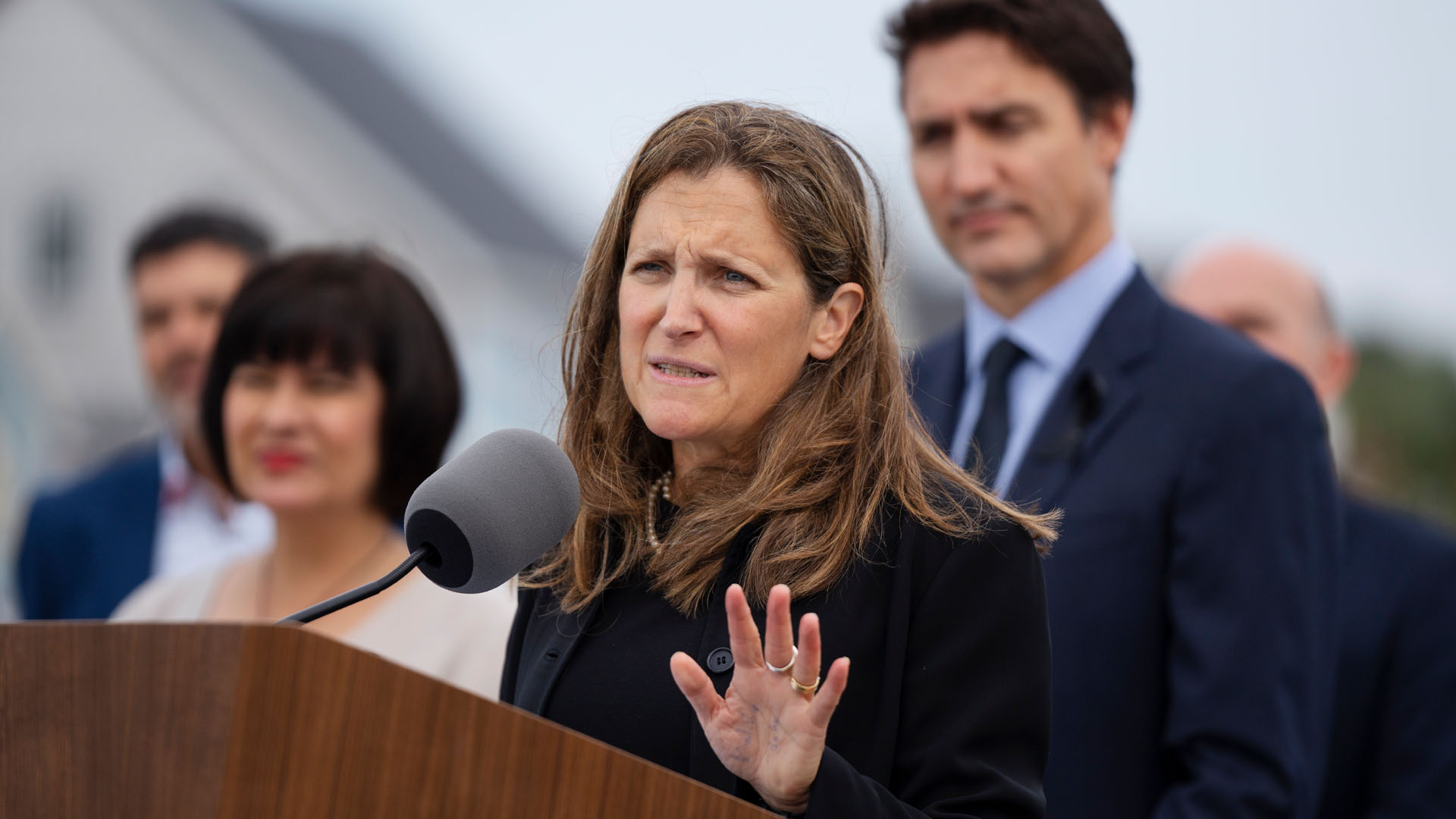
Following months of pressure from the federal NDP, the Trudeau government has finally announced three targeted measures to offer relief to lower-income Canadians. Key among these is that the goods and services (GST) tax credit will be doubled for six months in a bid to support the people most affected by rising prices.
Both the NDP and the Liberal government argue this will help make life more affordable for those most affected by inflation. Others claim it will just fuel inflationary pressures.
Based on our evidence, we have determined that the credit proposed will help its intended targets but will not be enough to lift many over the poverty line. However, concerns that the new policy will make inflation even worse may be overstated.
What is the GST credit?
The GST credit is income-tested and offsets the regressive nature of the tax by returning some or all (and in some cases more) of the GST paid by low- and modest- income Canadians when they purchase taxable goods and services.
Regressivity refers to the fact that while the GST is charged at a flat rate, the amount of the GST paid takes up a greater proportion of total income for those with low- and moderate-income levels. That’s because their household consumption takes up a larger share of their income.
Eligibility is generally dependent on family size and adjusted net family income based on their annual tax return.
The GST credit is paid quarterly to eligible Canadians. The value of the credit is adjusted for inflation annually, at the start of the benefit cycle, with four equal payments during the year. Eligibility in one year does not guarantee eligibility in the next year.
Figure 1 shows the base annual GST credit amounts (without the announced top-up) for the July 2022–June 2023 benefit year for different family types and net family incomes. For single adults, the maximum annual GST credit amounts available are $306 per adult and $161 per child.
There is also a supplement for single adults and single parents that is phased in as income rises over $9,920 and is completely phased out when income reaches about $40,000. Figure 1 also shows that for couples, the credit is immediately phased in at $0 of net income and is fully phased out between income levels of between roughly $49,000 to $58,000, depending on family size. Consistent with the policy intent of the credit, Figure 1 makes clear that the GST credit targets low- and modest-income Canadians.
Policy change
The federal government recently announced that Canadians who are already receiving the credit for the 2022-23 benefit year will receive a one-time top-up, equal to half of their annual benefit amount. Pending legislative authority, the payments are expected to be made before the end of December. For example, a couple with two children receiving the maximum amount of the credit at $934 annually (or $233.50 a quarter) will receive a top-up of $467. This would be in addition to their usual quarterly payments.
Who benefits and by how much?
While the government announcement tells us what the credit top-up is, it does not tell us how it will benefit families in the real world. We assess this using the social policy simulation database and model (SPSD/M). The SPSD/M is a statistically representative database of Canadian individuals in their family context, with enough information on each individual to compute taxes paid to, and cash transfers received from, the government including the GST credit.
Using the SPSD/M, we first predict the distribution of the GST credit top-up by net family income in 2021. Figure 2 shows the count of households (including singles, couples and families with kids) that will receive the one-time top-up by net family income (left panel) and the average dollar amount payable (right panel).
We see that the major beneficiaries are households with net family income of $20,000 – $40,000. They make up the bulk of recipients and receive the highest average top-up. They receive the highest average top-ups because, as shown in Figure 1, these are also the households that are receiving the maximum amount of the GST credit already. So, the federal government is correct when it asserts that the relief is targeted to low- and modest-income Canadians.
Next, we predict the increase in the GST credit by household type. In Figure 3, the left panel shows the count of households (in thousands) who will receive the GST credit top-up by household type. The right panel shows the average increase in the GST credit by household type (for those who currently receive the GST credit).
We see that single working-age adults make up the largest share of the beneficiaries, followed by single seniors. However, both single adults and single seniors receive a lower average increase to their GST credit compared to couples and families with kids. Conversely, single parents and couples with children make up a small share of beneficiaries but receive the highest average increases to their GST credit. This reflects how the GST credit is adjusted for family size and mirrors the underlying formula for the credit.
The top-up to the GST credit will be received by many persons who are estimated to be living in poverty in 2022. We estimate poverty using the market-basket measure (MBM) definition of poverty, which is Canada’s official poverty line. The MBM sets a poverty threshold by household size and by community to adjust for differences in local costs of essential goods and services. This means, for example, that some Canadians might have an income too high to qualify for the GST credit (because it does not adjust for local differences in costs) but not high enough to escape poverty.
Figure 4 plots the overall poverty rate (red bar) by household type and the poverty rate among those households who receive the GST credit (green bar). Across all household types, households receiving the GST credit are much more likely to be living in poverty than the Canadian average. Furthermore, the households that will benefit the most from the GST credit top-up — single parents who receive the largest average amount and single working-age adults who are more likely to receive the increase – live in the households experiencing the highest poverty rates.
However, the GST credit top-up will not have a large impact on the actual poverty rate (the blue bar). The GST credit, even with the top-up, is not large enough to lift many over the poverty line.
Impact on inflation
As mentioned above, opponents of this policy are concerned about the impact of new government spending on inflation. They fear that the GST credit top-up will entice recipients to purchase more goods and services, pushing up demand-side inflation.
This concern may be overstated. First, a recent working paper by University of Calgary economists Yu Chen and Trevor Tombe found that in Canada, since the second quarter of 2021, three-quarters of inflation has been driven by supply-side challenges. For example, disruptions in oil production, food crops and supply chains have reduced the supply of goods and services, pushing prices upwards. This suggests that while government transfers to individuals may affect inflation, the overall impact is likely to be small compared to the power of supply-side forces.
Furthermore, as indicated, the GST credit top-up will be received by low- and modest-income households. These same households have less in savings to cover price increases for the same goods and services, unlike higher-income households which have reserves on which to draw.
This suggests that people receiving a one-time top-up of on average between $192 (for most households) and $402 (paid to a small number of eligible single parents) will use the additional benefit to purchase the same goods and services they would otherwise consume but where price increases have caused financial strain. Such spending would not represent new demand or increase inflationary pressures.
This last point may be somewhat offset by the timing of the delivery of GST credit top-up. According to the federal government’s announcement, it is hoping to have the GST credit increase distributed in a one-time lump sum payment before the end of December, in time for the winter holidays.
If that happens, money may be used to purchase holiday-related items. That spending does represent new demand, and this could have a somewhat larger effect on demand-side inflation than if distributed at some other time. On the other hand, the money may arrive when home heating costs are rising seasonally and may be directed to those expenses instead.
Pros and cons of policy change
There are good features of the GST credit top-up. First, it is targeted to low- and modest-income Canadians, which helps with affordability. Second, it is available to all household types, not solely to seniors or families with children.
Recent research suggests that the exclusion of single working-age adults from poverty policy has resulted in a smaller decline in poverty rates of single adults compared to families with dependent children. Thus, this more inclusive approach is a step towards addressing this imbalance.
Third, it uses an existing administrative structure, so people already receiving the GST credit will be automatically eligible. This means they do not have to actively apply, simplifying access.
However, as with all policies, there are also drawbacks to the GST credit top-up. First, as noted, its timing may impact demand-side inflation depending on how households make use of the money. Second, persons who may be eligible but who did not file a tax return in 2021 will not receive it. By best estimates, nearly one- in-five households below the poverty line may not file annual returns and thus will miss out on benefits such as the GST credit. Because the GST credit relies on income information from a previous tax year, people who have low or modest income right now but who had higher income in 2021 will not get the GST credit top-up, even if they are experiencing financial strain due to inflation.
The GST credit increase is not a very large amount and will do little to address rates of low income – a missed opportunity. In general, the GST credit is a very small benefit compared to other, more generous benefits such as the Canada child benefit (CCB), which targets families with dependent children. While doubling six months of the GST credit does increase the amount, it is still nowhere near the same level of generosity as the CCB.
Of course, given that the government has struggled several times in the last few years to provide real-time support to Canadians in times of need, it also suggests the Finance Department should reconsider policy related to the administration of the tax system.
While refundable tax credits such as the GST credit are indexed annually for inflation, there is no reason why indexation cannot happen quarterly, as is the case with seniors’ benefits. This would ensure that targeted relief gets into the hands of Canadians in need faster and more automatically.
If we finally had a robust system of third-party reporting to the Canada Revenue Agency, including e-payroll, the government would be less reliant on annual returns to assess eligibility for income-tested credits. This would mean that targeting could be done closer to real time, recognizing that many Canadians experience income volatility, and move in and out of low-income categories in a given year.
If the federal government finally implemented the long-ignored promise of autofiling, then we would no longer have to worry about eligible Canadians missing out on tax credits that they deserve and for which they are eligible.














